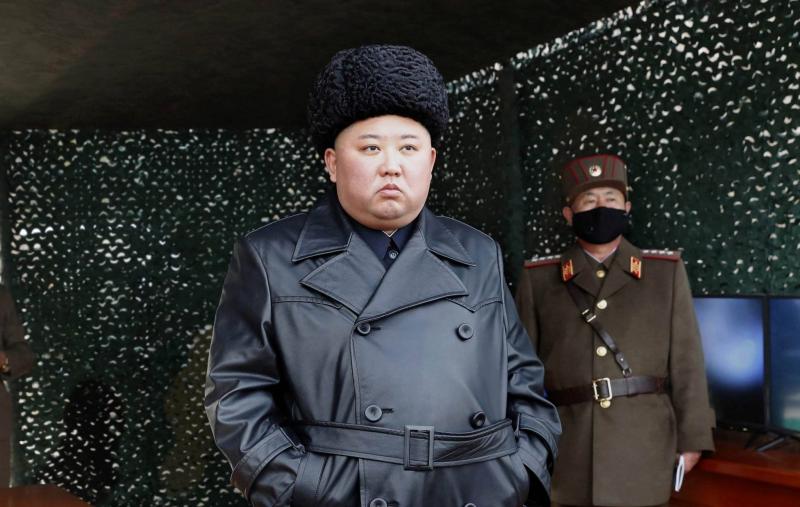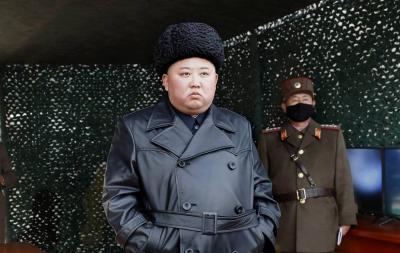North Korea announced on Wednesday that it successfully tested a hypersonic gliding missile, which may represent the latest advancement in the nuclear-armed state's weapon technology. The official Korean Central News Agency reported that the test conducted on Tuesday "proved that all technical specifications met the design requirements," emphasizing that the successful launch of this missile is "of great strategic importance" as North Korea seeks to increase its defensive capabilities "one thousandfold."
The hypersonic missile is characterized by its speed, which exceeds that of supersonic, ballistic, and conventional cruise missiles, and is also deemed more maneuverable, making it harder to intercept by missile defense systems that the United States spends billions of dollars on.
According to the official news agency, the launch took place from the Jagang province in the north of the country and "confirmed the missile's navigational control capability and stability," along with "the maneuvering ability of its guidance system and the gliding flight characteristics of its detachable hypersonic warhead" and engine. The agency stated that "test results confirmed that all technical specifications met the design requirements."
The missile, described as "Hwasong-8," was overseen by a prominent figure in the North Korean state apparatus, Pak Jong Chon, according to a statement that did not mention North Korean leader Kim Jong Un. The Rodong Sinmun newspaper published a photo of the missile ascending into the sky in the morning.
The South Korean military announced that North Korea conducted this missile test shortly after it happened early Tuesday morning, but contrary to its usual practice, it did not officially disclose the maximum altitude the missile reached or the distance it traveled, information it typically provides within less than an hour after observing a launch.
South Korean media reports, citing unnamed sources, indicated that the missile launched on Tuesday possesses "different flight characteristics" compared to previous launches, while President Moon Jae-in ordered a "comprehensive analysis" of the launch. This is the third missile test conducted by North Korea this month. The first test involved a long-range cruise missile, and the second involved short-range ballistic missiles. North Korea is currently under international sanctions due to its nuclear and banned ballistic missile programs.
The Korean Central News Agency reported that the development of hypersonic missiles is one of five "priority tasks" in the five-year strategic weapons plan presented by Kim Jong Un in January, who labeled the United States as a "primary enemy." The plan also includes developing a nuclear-powered submarine and intercontinental ballistic missiles.
Lim Eul-chul, a professor at the Institute for Far Eastern Studies, suggested that Pyongyang uses the development of its arsenal as a means to create space for diplomatic maneuvers and to enhance its military standing. The researcher anticipates further missile launches in the future, stating that "in a certain manner, the recent behavior of the North can be anticipated; they have announced military actions and are now implementing them step by step."
Both Koreas are strengthening their military capabilities, which may lead to an arms race on the divided peninsula. Seoul is also investing billions of dollars in military development and successfully conducted a submarine-launched ballistic missile test this month, making it one of the few countries with this advanced technology. On Tuesday, it held a ceremony to present its third missile-launching submarine.
Washington and Seoul are bound by a security treaty and the United States stations about 28,500 troops in South Korea to protect it from its northern neighbor. North Korea is currently more isolated than ever since closing its borders early last year to prevent the spread of the coronavirus. Its talks with the United States have stalled since the unsuccessful Hanoi summit in 2019 between Kim Jong Un and then President Donald Trump.
Since Kim Jong Un came to power, Pyongyang has developed its weapon programs but has not conducted any nuclear tests or fired intercontinental ballistic missiles since 2017. The Biden administration has several times stated that it considers the missile test on Tuesday a violation of sanctions and a threat to the international community, and it is prepared to meet with North Korean officials anywhere and anytime without preconditions as part of its efforts to denuclearize. However, Pyongyang has shown no intention of abandoning its arsenal, which it claims is necessary for its self-defense in the event of a U.S. invasion.




